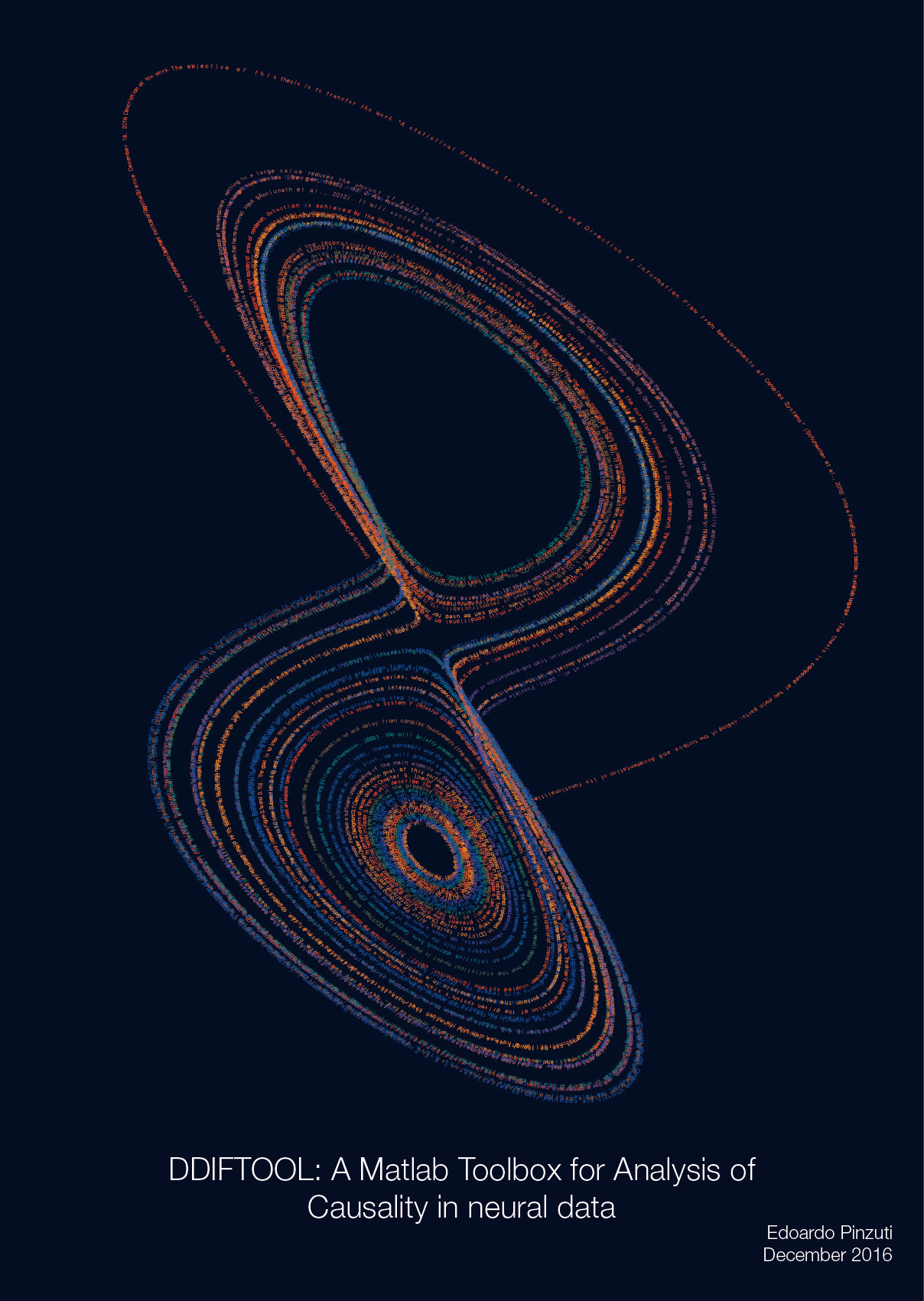DDIFTOOL: A Matlab Toolbox for Analysis of Causality in neural data
for Edoardo Pinzuti
Edoardo developed a python software package to analyze causal information transfer between brain areas. The Thesis Art piece, inspired by the Lorenz system’s chaotic attractor (as used in his thesis), is the first Thesis Art to features text placed along a path, marking a significant milestone in the overall visual concept.
The Creation Process
Edoardo’s thesis focused on causal relationships between brain regions, which he probed using coupled Lorenz attractors. The overall ideas stem from Takens’s Theorem and are based on time embeddings. The visual concept was shaped by these chaotic systems, with Edoardo and Benedikt discussing its use in this context.
Artistic Concept
The design is based on an chaotic attractor, similar to how the unobservable neuronal activation stats can be thought of – thoughts circling and always moving back to a central theme. This connection between physics, chaotic systems, and the brain was is clearly reflected in the final artwork.
“This project was a great example of how theory and creativity can merge. Edoardo’s work on causality in neural data came to life in a way that felt both visually striking and scientifically meaningful.”
Benedikt Ehinger
Personal Reflection
For Benedikt, this artwork marked a pivotal moment in his creative journey. The integration of individual glyphs of the text along a defined path was a significant formative decision, but also a computational challenge. Visualizing the large amount of individual characters broke nearly all common professional plotting and visualization tools.
